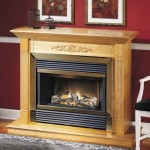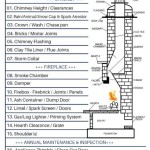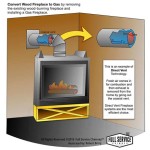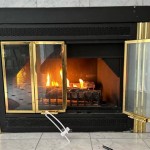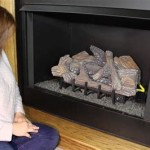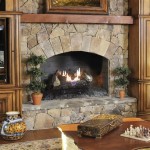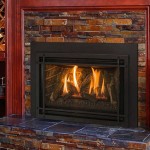Fireplace Odor Eliminator: Understanding and Addressing Unpleasant Smells
Fireplaces, while offering warmth and ambiance, can sometimes emit unpleasant odors that permeate a home. These smells can range from musty and smoky to creosote-laden and even, in some cases, resemble the scent of decaying animals. Identifying the source of the odor and implementing appropriate solutions is crucial for maintaining a comfortable and healthy living environment. This article will explore the common causes of fireplace odors, detail effective elimination strategies, and provide preventative measures to minimize future occurrences.
Understanding the Sources of Fireplace Odors
Several factors can contribute to unwanted smells emanating from a fireplace. The most prevalent causes are related to the byproducts of combustion, moisture accumulation, and the presence of organic matter within the chimney system. Addressing each of these potential sources requires a targeted approach.
Creosote Buildup: Creosote is a tar-like substance formed during the incomplete combustion of wood. It consists primarily of condensed wood gasses, smoke, and volatile compounds. Over time, creosote accumulates within the chimney flue, forming a thick, crusty layer. This layer is not only a fire hazard but also a significant source of odor. The smell is often described as pungent and acrid, with a distinct smoky quality. The odor is more pronounced during periods of high humidity, as moisture reactivates the volatile compounds within the creosote.
Moisture and Mold: Moisture intrusion is another common culprit behind fireplace odors. Rainwater, snowmelt, and condensation can seep into the chimney, saturating the creosote deposits and leading to mold and mildew growth. Mold thrives in damp, dark environments and produces a characteristic musty odor. This odor is often exacerbated during periods of high humidity or after rainfall. Improperly sealed chimney crowns, cracked mortar joints, and damaged flashing are common entry points for moisture.
Animal Activity: Chimneys provide sheltered environments for various animals, including birds, squirrels, raccoons, and even rodents. These animals may build nests within the chimney, which can trap debris and organic matter. Animal droppings, decaying food scraps, and even deceased animals can contribute to foul odors. These odors are often described as putrid and may attract insects and other pests. The presence of animal nests can also obstruct airflow, increasing the risk of chimney fires.
Damper Problems: A malfunctioning or improperly sealed damper can contribute to fireplace odors in several ways. A damper that does not completely close allows outside air, along with any associated odors, to enter the home. Conversely, a damper stuck in the closed position can trap stagnant air and odors within the fireplace chamber. Additionally, a damaged damper can allow moisture to enter the chimney, exacerbating mold and mildew growth.
Poor Ventilation: Inadequate ventilation within the home can also contribute to fireplace odors. If the fireplace is not properly vented, smoke and combustion byproducts can linger in the room, contributing to a persistent smoky smell. This is particularly problematic in homes with tightly sealed windows and doors, which restrict airflow. Ensuring proper ventilation, such as opening a window slightly during fireplace use, can help mitigate this issue.
Strategies for Eliminating Fireplace Odors
Once the source of the fireplace odor has been identified, appropriate elimination strategies can be implemented. These strategies range from professional chimney cleaning to simple home remedies.
Professional Chimney Cleaning: A professional chimney sweep is the most effective way to remove creosote buildup and other debris from the chimney flue. Chimney sweeps use specialized tools and techniques to scrape away creosote deposits, remove animal nests, and inspect the chimney for damage. Regular chimney cleaning, typically recommended annually, is crucial for maintaining fire safety and preventing odor problems. During the cleaning process, the chimney sweep may also identify and address any potential issues, such as cracked flue tiles or damaged mortar joints.
Moisture Control Measures: Addressing moisture intrusion is essential for preventing mold and mildew growth within the chimney. This may involve repairing or replacing the chimney crown, sealing cracked mortar joints, and ensuring proper flashing around the chimney. Applying a waterproofing sealant to the exterior of the chimney can also help prevent moisture penetration. In cases of severe mold infestation, professional mold remediation services may be required.
Animal Removal and Prevention: If animals have taken up residence in the chimney, professional wildlife removal services are recommended. These professionals have the expertise and equipment to safely remove animals without harming them or damaging the chimney. After the animals have been removed, the chimney should be thoroughly cleaned to remove any remaining debris and droppings. Installing a chimney cap with a mesh screen can prevent animals from re-entering the chimney in the future. Select a chimney cap that is durable and resistant to corrosion.
Damper Repair or Replacement: A faulty damper should be repaired or replaced as soon as possible. A damaged damper can allow drafts, moisture, and odors to enter the home. Replacing a damper typically involves removing the old damper and installing a new one that fits snugly within the chimney flue. Some dampers are designed to be energy-efficient, providing a tighter seal and reducing heat loss when the fireplace is not in use.
Air Purifiers and Odor Absorbers: Air purifiers equipped with HEPA filters and activated carbon filters can help remove airborne particles and odors from the home. These purifiers are particularly effective at reducing smoky smells and other unpleasant odors associated with fireplace use. Odor absorbers, such as baking soda or activated charcoal, can also be placed near the fireplace to absorb lingering odors. Replace these odor absorbers regularly to maintain their effectiveness.
Home Remedies and Cleaning Solutions: Several home remedies can help neutralize fireplace odors. Placing a bowl of vinegar or baking soda near the fireplace can absorb odors. Boiling a pot of water with cinnamon sticks or cloves can also help freshen the air. For cleaning the fireplace hearth and surrounding areas, use a solution of mild detergent and water. Avoid using harsh chemicals or abrasive cleaners, as these can damage the fireplace materials.
Preventative Measures for Minimizing Future Odors
Preventing fireplace odors is often easier than eliminating them once they have become established. Implementing preventative measures can significantly reduce the likelihood of future odor problems.
Regular Chimney Inspections: Annual chimney inspections by a qualified professional are crucial for identifying potential problems before they become serious. During an inspection, the chimney sweep will assess the condition of the chimney flue, check for creosote buildup, and inspect the damper and other components. Early detection of problems allows for timely repairs and prevents costly damage.
Proper Burning Practices: Burning seasoned wood is essential for minimizing creosote buildup and reducing smoke emissions. Seasoned wood has a moisture content of 20% or less, which allows it to burn more cleanly and efficiently. Avoid burning green wood, which produces excessive smoke and contributes to creosote accumulation. Ensure adequate airflow during fireplace use to promote complete combustion. Building smaller, hotter fires is generally preferable to building large, smoldering fires.
Chimney Cap Installation: Installing a chimney cap with a mesh screen is a simple and effective way to prevent animals from entering the chimney and building nests. The chimney cap also protects the chimney from rainwater and snowmelt, reducing the risk of moisture intrusion. Inspect the chimney cap regularly to ensure that it is in good condition and free of debris.
Maintaining Proper Ventilation: Ensuring adequate ventilation within the home is crucial for preventing smoke and odors from lingering in the room. Open a window slightly during fireplace use to allow fresh air to circulate. Consider installing a fireplace insert with a built-in fan to improve airflow and distribute heat more efficiently. Regularly inspect and clean the fireplace ventilation system to ensure that it is functioning properly.
Addressing Leaks Promptly: Leaks in the chimney or roof should be addressed promptly to prevent moisture intrusion and mold growth. Repairing cracked mortar joints, replacing damaged flashing, and sealing the chimney crown can help prevent water from entering the chimney. Regularly inspect the chimney and roof for signs of leaks and address any issues immediately.
Addressing fireplace odors requires a comprehensive approach that considers the various potential sources and implements appropriate elimination and prevention strategies. Regular maintenance, proper burning practices, and prompt repairs are essential for maintaining a clean and odor-free fireplace.

Get Rid Of Fireplace Odor With Nok Out Nokout Com

How To Extinguish Fireplace Odors Molly Maid

Fireplace Odors 6 Quick Fixes You Need To Know About Flames

How To Clean A Natural Stone Fireplace Step By Guide Granite Gold

Why Does My Fireplace Smell Full Service Chimney

Odor Removal After Smoke Damage

Odoban 7 Oz Charcoal Odor Eliminator Air Purifying Natural Non Toxic Remover Moisture Absorber Bag For Car Home 9760a61 200m The Depot

Odoreze Eco Friendly Landfill Odor Control Spray Concentrate Noodor Com

Odoban 32 Oz Outdoor And Yard Odor Eliminator 6 Pack 927561 Q6 The Home Depot

Odoban 7 Oz Charcoal Odor Eliminator Air Purifying Natural Non Toxic Remover Moisture Absorber Bag For Car Home 9760a61 200m The Depot
Related Posts


